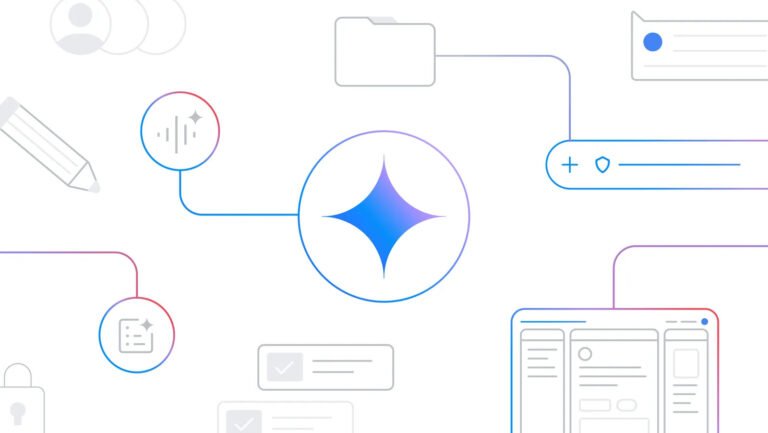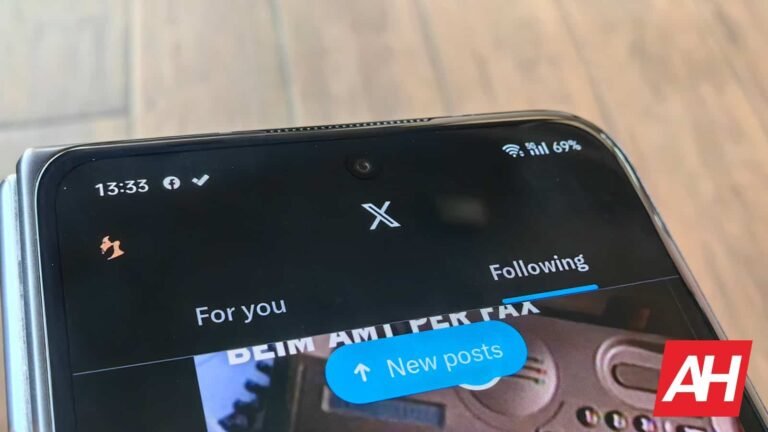![]()
This time around, we’re comparing some of the very best smartphones Google and Apple have to offer. We’ll be comparing Google’s large-format flagship and Apple’s compact flagship. In other words, this is a comparison between the Google Pixel 9 Pro XL vs Apple iPhone 16 Pro. Both of these smartphones are very compelling, but they’re also very different at the same time. There are some similarities between them, but not a lot.
We’ll first list the specs of both smartphones, as we usually do, and then we’ll jump over to a number of other categories. We will compare their designs, displays, performance, battery life, cameras, and audio output. These two devices not only look different and have considerably different internals, but also differ in a number of other ways. Let’s see what they have to offer, shall we?
Specs
Google Pixel 9 Pro XL

Apple iPhone 16 Pro
| Google Pixel 9 Pro XL | Apple iPhone 16 Pro | |
|---|---|---|
| Dimensions | 162.8 x 76.6 x 8.5 mm | 149.6 x 71.5 x 8.3 mm |
| Weight | 221 grams | 199 grams |
| Display | 6.8-inch LTPO OLED | 6.3-inch LTPO Super Retina XDR OLED |
| Refresh rate | 1-120Hz (adaptive) | 1-120Hz (adaptive) |
| Resolution | 2992 x 1344 | 2622 x 1206 |
| Chipset | Google Tensor G4 | Apple A18 Pro |
| RAM | 16GB (LPDDR5X) | 8GB |
| Storage | 128GB/256GB/512GB/1TB (UFS 3.1) | 128GB/256GB/512GB/1TB (NVMe) |
| Main camera | 50MP (f/1.7 aperture, 1/1.31-inch sensor size, 1.2um pixel size, dual pixel PDAF, OIS) | 48MP (wide, f/1.8 aperture, 1/1.28-inch sensor size, 1.22um pixel size, dual pixel PDAF, sensor-shift OIS) |
| Ultra-wide camera | 48MP (f/1.7 aperture, 1/2.55-inch sensor size, 123-degree FoV, dual pixel PDAF) | 48MP (f/2.2 aperture, 1/2.55-inch sensor size, 0.7um pixel size, PDAF) |
| Telephoto camera | N/A | N/A |
| Periscope telephoto camera | 48MP (f/2.8 aperture, 1/2.55-inch sensor size, dual pixel PDAF, OIS, 5x optical zoom) | 12MP (f/2.8 aperture, 1/3.06-inch sensor size, 1.12um pixel size, dual pixel PDAF, 3D sensor-shift OIS, 5x optical zoom) |
| Selfie camera | 42MP (f/2.2 aperture, PDAF) | 12MP (f/1.9 aperture, 1/3.6-inch sensor size, 1.0um pixel size, PDAF, OIS) |
| Battery size | 5,060mAh | 3,582mAh |
| Charging | 37W wired, 23W wireless (Pixel Stand), 12W wireless (Qi), 5W reverse wired (charger not included) | 38W wired, 25W MagSafe wireless, 15W Qi2 wireless (charger not included) |
| Colors | Porcelain, Rose Quartz, Hazel, Obsidian | Black Titanium, White Titanium, Natural Titanium, Desert Titanium |
Google Pixel 9 Pro XL vs Apple iPhone 16 Pro: Design
Both of these smartphones include flat displays with uniform bezels around those panels. The bezels on the iPhone 16 Pro are a bit thinner, though. The Pixel 9 Pro XL includes a centered display camera hole up top, while the iPhone 16 Pro has a pill-shaped cutout, the so-called Dynamic Island. The frame on both of these phones is flat, all around them, actually. It is slightly rounded towards the edges, though, for comfort’s sake.
The Pixel 9 Pro XL includes a power/lock button on the right side, along with its volume up and down keys. There are no buttons on the left side. The iPhone 16 Pro has a power/lock key on the left, along with a Camera control button. On the left side, you’ll find its volume up and down buttons, along with an Action Button. Both smartphones include a Type-C port at the bottom for charging purposes.
If we flip them around, you’ll see noticeably different camera builds. The Pixel 9 Pro XL has a camera bar, which is horizontal, and is placed at the top of the phone’s back. It includes three cameras and protrudes quite a bit. The iPhone 16 Pro, on the other hand, has three cameras in the top-left corner, inside a square camera island. Both phones have glass backplates, and both are quite slippery. The iPhone 16 Pro is easier to use, though, due to its size.
The Pixel 9 Pro XL is made out of aluminum and glass, while the iPhone 16 Pro is made out of titanium and glass. Both smartphones offer an IP68 certification for water and dust resistance, which should give you some peace of mind.
Google Pixel 9 Pro XL vs Apple iPhone 16 Pro: Display
The Google Pixel 9 Pro XL features a 6.8-inch LTPO OLED display. That panel is flat, and it supports HDR10+ content. The peak brightness here is 3,000 nits, while the refresh rate is adaptive (1-120Hz). This phone has a screen-to-body ratio of around 88%, while the display aspect ratio is 20:9. The resolution here is 2992 x 1344, while the Gorilla Glass Victus 2 protects this display.

The iPhone 16 Pro, on the other hand, includes a 6.3-inch display, which is also flat. That display has a resolution of 2622 x 1206 pixels, and it’s an LTPO Super Retina XDR OLED panel. It has an adaptive refresh rate of up to 120Hz, and it supports HDR10 and Dolby Vision. The peak brightness this display can offer is 2,000 nits. The screen-to-body ratio is at around 90%, while the display aspect ratio is 19.5:9. The Ceramic Shield Glass protects this display.
Both of these panels are actually really good. They’re both bright enough and sharp enough, while they’re also vivid and offer great viewing angles. The touch response is also good on both, while the blacks are as deep as you’d expect them to be. Neither panel supports high-frequency PWM dimming, though. The vast majority of people will be happy with either of these two displays, just keep in mind the size difference between them.
Google Pixel 9 Pro XL vs Apple iPhone 16 Pro: Performance
The Google Pixel 9 Pro XL is fueled by the Google Tensor G4 processor. That is Google’s 4nm chip, and the latest one Google has to offer. It is paired with 16GB of LPDDR5X RAM and UFS 3.1 flash storage. The Apple iPhone 16 Pro is fueled by the Apple A18 Pro chip, a 3nm processor. That is the most powerful chip from Apple. It is paired with 8GB of RAM and NVMe flash storage. Neither phone supports expandable storage, by the way.
Both of these phones deliver great performance. They’re very snappy in day-to-day tasks. You won’t have to wait at any point, basically, lag is simply not a part of the equation. The iPhone 16 Pro does have a more powerful chip, but the one in the Pixel 9 Pro XL is really well-optimized for that phone. You really won’t notice the difference in day-to-day use, that’s for sure.
Where you will start noticing a difference is in the gaming department, but only if you’re playing the most demanding games out there. The iPhone 16 Pro is the better phone for gaming, that’s for sure. However, if you’re playing low-end or mid-range games, in other words, games that are not too demanding graphically, well… it doesn’t really matter, both of these phones can handle them just fine. Heat was also not an issue.
Google Pixel 9 Pro XL vs Apple iPhone 16 Pro: Battery
Google’s handset comes with a 5,060mAh battery on the inside. The iPhone 16 Pro, on the other hand, includes a 3,582mAh battery. That is quite a different, but then again, there is quite the size difference between these two phones. On top of that, iPhones usually have smaller battery packs than their Android counterparts. Which phone offer better battery life, though?
Well, both of them are very good in that regard, but the iPhone 16 Pro lasted longer for us. The iPhone 16 Pro managed to get around 1 hour of extra screen-on time, on average, but both of these phones are very good in the battery life department. In fact, both of them will last for an entire day for the vast majority of people, without a problem. Even if you’re a power user, you could end up getting to the end of the day without a second charge.
What about charging? Well, the Pixel 9 Pro XL supports 37W wired, 23W wireless (Pixel Stand), 12W wireless (Qi), and 5W reverse wireless charging. The iPhone 16 Pro, on the flip side, supports 38W wired, 25W wireless (MagSafe), 15W wireless (Qi), and 4.5W reverse wired charging. Despite the fact that the iPhone 16 Pro has faster peak charging, slightly, and a smaller battery, it takes longer to charge. It will take you around an hour and 40 minutes to fully charge it. The Pixel 9 Pro XL takes around an hour and 20 minutes to reach 100%. Neither phone ships with a charger in the box.
Google Pixel 9 Pro XL vs Apple iPhone 16 Pro: Cameras
The Google Pixel 9 Pro XL features three cameras on the back. A 50-megapixel main camera (1/1.31-inch sensor size) is backed by a 48-megapixel ultrawide unit (1/2.55-inch sensor size, 123-degree FoV). The third camera on the back is a 48-megapixel periscope telephoto unit (1/2.55-inch sensor size, 5x optical zoom).

The Apple iPhone 16 Pro also has three cameras on the back. It has a 48-megapixel main camera (1/1.28-inch sensor size), a 48-megapixel ultrawide snapper (1/2.55-inch sensor size), and a 12-megapixel periscope telephoto camera (1/3.06-inch sensor size, 5x optical zoom). They have different setups, but both phones have main, ultrawide, and periscope telephoto cameras on the back.
The pictures they offer are different, however. The Pixel 9 Pro XL leans towards more contrasty shots, which don’t look that close to real life. The iPhone 16 Pro provides images that look nice and are also closer to real life. It all depends on what your preference is. The quality from their main and ultrawide cameras is similar, while the Pixel 9 Pro XL wins the periscope telephoto camera comparison, for us.
Audio
You will find a set of stereo speakers on both of these phones. The ones on the Pixel 9 Pro XL are a bit louder, though. You can notice the difference when you’re playing them side-by-side, that’s for sure. Both sets are just fine, though.
What you will not find on either phone is an audio jack. You can, however, use their Type-C ports to connect your wired headphones. Alternatively, both of these phones support Bluetooth 5.3 for wireless connectivity.
The post Phone Comparisons: Google Pixel 9 Pro XL vs Apple iPhone 16 Pro appeared first on Android Headlines.

